The modern office workspace is constantly evolving, driven by advancements in technology and the need for increased efficiency and productivity. One of the key technologies that is revolutionizing office spaces is the Internet of Things (IoT). IoT-enabled devices are transforming traditional offices into smart workspaces, where everything from furniture to appliances is connected and data-driven.
In this article, we will explore the various ways in which IoT is reshaping office workspaces. From responsive workspaces and sustainability initiatives to the integration of technology and the optimization of work settings, we will delve into the benefits and possibilities that IoT brings to the modern office environment.
1. Introduction: The Evolution of IoT in the Workplace
Firstly, the Internet of Things (IoT) has emerged as a transformative force across various sectors, and its integration into office environments is reshaping the way professionals interact with their workspace. IoT refers to the network of interconnected devices and systems that communicate with each other, enabling automation, data sharing, and improved decision-making. In professional settings, this connectivity has unlocked new opportunities for efficiency, productivity, and cost savings.
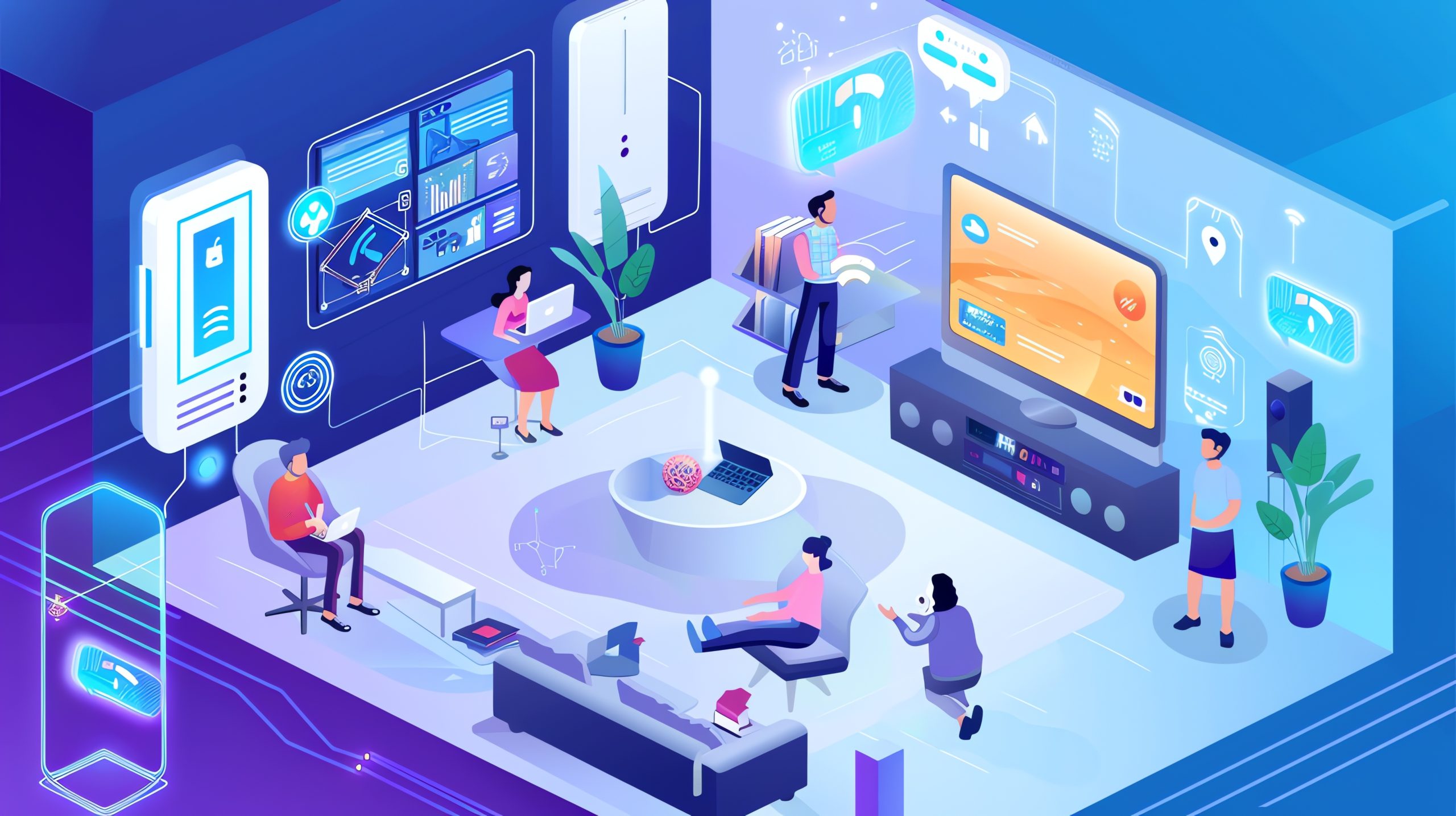
a. Overview of IoT in professional settings
In the past, office technology was often limited to computers, printers, and basic network setups. Today, however, the scope of IoT in professional settings is vast. It includes everything from real-time air quality sensors to advanced security systems that use facial recognition or biometrics for access control. These devices and systems collect valuable data that help organizations make informed decisions, optimize resource use, and provide personalized experience for employees. The growing presence of IoT in offices signals a broader shift towards more interconnected, automated environments that prioritize efficiency and employee well-being.
But in modern offices today, IoT is no longer a futuristic concept—it’s a reality that’s already improving operations across industries. One of the most significant benefits of IoT in office spaces is automation. Devices such as smart thermostats, lighting systems, and even occupancy sensors adjust settings based on real-time conditions, reducing energy waste and increasing efficiency.
b. Importance of IoT in modern workspaces
IoT is rapidly becoming essential in creating workplaces that are not just functional, but also optimized for employee satisfaction and productivity. One of the biggest advantages of IoT in office spaces is its ability to create smarter, more sustainable environments. Smart HVAC systems, for instance, can monitor office occupancy and adjust temperatures, accordingly, helping companies reduce energy consumption while maintaining comfort. These energy savings not only contribute to sustainability goals but also result in lower operational costs, making IoT a win-win for both the environment and the bottom line.
Moreover, the role of IoT extends beyond just the physical workspace. With hybrid and remote work becoming the norm, companies are leveraging IoT technologies to manage these new ways of working. Tools that monitor desk availability or provide real-time data at the best times for collaborative meetings ensure that employees have seamless, productive experience regardless of where they are working from.
Additionally, IoT-enabled apps that track employee well-being, like air quality sensors or lighting systems that adjust to optimize circadian rhythms, play a critical role in improving health and productivity in the workplace.
Read more: The Advantages and Disadvantages of IoT in Business
c. Future projections and adoption trends
Looking ahead, the adoption of IoT in office workspaces is set to expand dramatically. As businesses continue to prioritize digital transformation, IoT will become increasingly integrated into the fabric of office design and management. The next wave of IoT innovation will be driven by advancements in technologies like 5G, artificial intelligence (AI), and machine learning, which will allow IoT systems to not only respond to real-time data but predict future conditions and needs.
The future of IoT in office spaces is also likely to see more widespread adoption of “smart” building technologies that integrate seamlessly with cloud-based management systems. This shift will allow businesses to gather and analyze vast amounts of data on everything from energy consumption to employee movement patterns, offering valuable insights that drive decision-making.
As companies recognize the long-term benefits of IoT, such as improved employee engagement, operational efficiency, and cost savings, we can expect to see an increasing number of organizations adopting these technologies. The future is undoubtedly “smart“—and IoT will be at the heart of this transformation.
2. Key Applications for IoT in Office Workspaces
The integration of Internet of Things (IoT) technologies in office workspaces is transforming the way businesses operate, and employees interact with their environment. Below are some of the most impactful applications of IoT in the modern office
a. Smart Office Devices
Smart office devices, powered by IoT technology, are becoming increasingly popular in office environments, offering innovative solutions that improve productivity, efficiency, and comfort. These devices leverage connectivity to automate everyday tasks, optimize resource usage, and provide real-time data that can enhance decision-making.

-
Smart Lighting Systems
Lighting is a key factor in creating a productive and comfortable office environment. Traditional office lighting systems often rely on manual adjustments or fixed settings, leading to energy wastage and discomfort. Smart lighting systems, however, offer much greater flexibility and efficiency. These systems use motion sensors to automatically adjust lighting levels based on occupancy and time of day, ensuring that lights are only on when needed.
Additionally, smart lighting can be integrated with environmental factors like natural sunlight, adjusting brightness levels to complement daylight, and reducing the need for artificial lighting during the day. Some systems even allow employees to control lighting through their smartphones or voice commands, enabling them to customize their workspace according to their preferences. This not only saves energy but also contributes to a more personalized and efficient work environment.
-
Smart Desks and Adjustable Workstations
As flexible working arrangements become more common, smart desks and adjustable workstations are becoming essential tools for modern offices. These desks can be equipped with sensors that detect when an employee is using them and track their usage patterns. In some cases, desks can even adjust their height automatically, promoting healthier work habits by encouraging employees to alternate between sitting and standing throughout the day.
Moreover, smart desks can be integrated with personal preferences, storing an employee’s preferred settings for desk height, lighting, and even room temperature. This level of customization creates a more comfortable and ergonomic environment, which can lead to better focus, reduced fatigue, and overall increased productivity. Some models also feature built-in charging stations, wireless charging pads, and cable management systems, further reducing clutter and improving workspace organization.
-
Smart Thermostats and Climate Control
Maintaining a comfortable temperature in the office is vital for employee productivity, yet traditional HVAC systems often waste energy by keeping spaces at a fixed temperature regardless of occupancy. Smart thermostats, like those powered by IoT technology, can monitor temperature fluctuations in real-time and adjust climate settings based on usage patterns, occupancy, and even the time of day.
These systems can be controlled remotely, allowing office managers to adjust settings on the go and optimize energy efficiency. For example, during after-hours or weekends, the system can automatically reduce heating or cooling, saving energy and reducing utility costs. Additionally, some smart thermostats can integrate with other IoT devices, such as air quality sensors, to provide a more comprehensive approach to creating an ideal working environment.
-
Smart Meeting Rooms
Smart meeting room technology is transforming the way teams collaborate in the office. These devices include IoT-powered conference tables, smart whiteboards, and video conferencing systems that help streamline meetings and improve communication. Smart conference tables, for instance, can automatically detect when participants are seated, adjust the lighting to optimal levels, and even manage multimedia content for presentations.
Smart whiteboards take collaboration a step further by allowing users to write, draw, and share digital content seamlessly. These devices can store notes, connect to cloud-based platforms, and integrate with project management tools, making it easier for teams to track progress and share information. Furthermore, video conferencing systems equipped with AI-powered cameras and microphones can optimize sound and video quality based on the room layout, ensuring that virtual participants have smooth and engaging experience.
-
Voice Assistants and Smart Speakers
Voice-activated smart assistants, such as Amazon Alexa, Google Assistant, or Microsoft Cortana, are becoming commonplace in modern office environments. These devices can be used to manage schedules, set reminders, control smart devices, and answer questions—all through simple voice commands. For example, an employee can ask the voice assistant to schedule a meeting, control the office lighting, or check the room temperature without leaving their desk.
Beyond convenience, these smart assistants help reduce the need for manual input and enable multitasking. In larger office environments, smart speakers can be used to broadcast announcements or notify employees of important updates, providing a more efficient communication channel throughout the workspace.
-
Smart Printers and Office Equipment
Smart office equipment, including printers, copiers, and scanners, are increasingly being integrated with IoT technology to streamline operations and reduce costs. These devices are connected to the network, enabling users to print, scan, and copy documents remotely. Smart printers, for instance, can track ink or toner levels and automatically reorder supplies when they run low, ensuring that there’s no downtime due to equipment failure.
In addition, IoT-enabled printers can provide detailed usage reports, helping businesses identify inefficiencies or excessive use of resources. This allows office managers to make data-driven decisions on resource allocation, maintenance schedules, and budgeting for office supplies.
b. Workplace Monitoring and Management
Through real-time data collection, automation, and advanced analytics, IoT enables businesses to optimize office operations, enhance employee productivity, and improve resource allocation. Below are some key applications of IoT in workplace monitoring and management:

-
Space Utilization and Occupancy Monitoring
One of the most valuable applications of IoT in workplace management is optimizing space utilization. Traditional office layouts often struggle to accommodate the evolving needs of modern businesses, particularly with the rise of hybrid and remote work. IoT-enabled sensors, such as occupancy sensors and smart floor plans, provide detailed insights into how office spaces are being used.
Occupancy sensors installed in meeting rooms, desks, and common areas detect when a space is occupied and can send real-time data to a central system. This allows office managers to track occupancy patterns, identify underutilized areas, and adjust office layouts or resources accordingly. For instance, unused desks can be reassigned to employees on-demand, and meeting rooms can be reserved more efficiently.
Additionally, data from these sensors helps businesses make informed decisions about whether to downsize, expand, or reorganize their office spaces to better align with employee needs and work patterns.
-
Workforce Productivity Tracking
Another application of IoT in workplace monitoring is the ability to track and measure workforce productivity. While this might seem like a controversial area due to concerns over privacy, IoT systems can provide valuable insights into how employees are spending their time and where improvements can be made.
IoT-enabled tools can track data points such as time spent in meetings, time spent at desks, and usage of collaborative spaces. This data can be used to identify workflow bottlenecks, determine peak productivity hours, and optimize meeting schedules. In some cases, companies may use this data to suggest changes in work patterns or to optimize workspaces to support more focused work or collaboration.
-
Security and Asset Tracking Management
Security and access management is a critical area for any office, and IoT plays a significant role in enhancing these systems. Traditional access control systems, such as physical keys or badge entry systems, are being replaced or augmented with IoT-enabled technologies like biometric scanners, smart locks, and facial recognition systems.
These devices allow for more secure and efficient access management. For example, smart locks can automatically grant access to authorized personnel and send notifications to security teams if unauthorized access is attempted. IoT-enabled security cameras, integrated with advanced analytics, can help monitor office premises in real-time, identifying potential security threats or unusual activities.
In addition, asset management platforms can generate detailed reports on asset utilization, helping businesses optimize their procurement processes and reduce unnecessary purchases. By improving asset management, businesses can save on costs and ensure that resources are being used efficiently.
c. IoT-Powered Collaboration Tools
Collaboration is a fundamental aspect of modern workplaces, particularly as businesses increasingly adopt hybrid work models. The ability for employees to effectively collaborate—whether in person or remotely—directly impacts productivity, innovation, and overall organizational success.

-
Communication Tools
IoT technologies are enhancing communication within the workplace by enabling more seamless interactions across multiple devices and platforms. Through the integration of IoT-powered communication tools, employees can stay connected in real-time, whether they’re in the office or working remotely. Smart devices like IoT-enabled smartphones, tablets, and wearables can be used to share information quickly, making it easier for employees to access documents, chat, and collaborate from any location.
For example, smart speakers, such as Amazon Alexa for Business or Google Assistant, can be integrated into communication systems, allowing employees to initiate video calls, send messages, or access team schedules with voice commands. These tools simplify routine tasks, freeing up time for more meaningful collaboration.
Additionally, IoT-enabled collaboration platforms can automatically update team calendars, suggest meeting times based on availability, and send reminders or notifications to keep everyone on track.
-
Real-Time Document and File Sharing
Collaboration often involves the sharing and editing of documents and files, a process that can be made more efficient with IoT-connected devices. IoT-enabled file-sharing systems facilitate real-time collaboration on documents, spreadsheets, and presentations by syncing changes across all connected devices. Whether team members are working in the same office or from different locations, they can collaborate seamlessly on the same files, with updates being reflected immediately.
For example, smart devices such as digital whiteboards, tablets, or touchscreen monitors allow multiple team members to work on documents or designs simultaneously. IoT tools can also track the version history of a document, ensuring that every collaborator has access to the most up-to-date information, reducing the risk of errors or miscommunication. Cloud-based systems integrated with IoT technologies make it easier to manage permissions and ensure that sensitive data is shared securely.
-
Remote Collaboration and Video Conferencing
In today’s hybrid work environment, remote collaboration is essential. IoT technologies are helping bridge the gap between in-office and remote teams by enhancing video conferencing experiences. Advanced IoT-driven video conferencing systems provide high-quality audio and video feeds, automatically adjusting for lighting conditions and optimizing sound clarity. With the integration of AI, these systems can focus on the active speaker, ensuring that all participants are engaged in the conversation, regardless of where they are located.
Moreover, IoT-enabled platforms allow remote teams to seamlessly interact with their in-office colleagues using a combination of video, voice, and messaging. These systems often integrate with other productivity tools like project management platforms and calendars, allowing teams to work together in real-time across time zones. IoT’s ability to create a smooth, immersive meeting experience is vital for maintaining strong communication and collaboration across distributed teams.
-
Digital Signs
Digital signage is becoming increasingly prevalent in offices, enabling companies to disseminate information more effectively. By connecting screens to the right software, offices can enhance employee engagement, share company news and figures, display social media feeds, and improve productivity through Trello boards and other dashboards. Digital signs bring office communications to life, creating a more immersive and interactive environment.
3. IoT and Sustainability in the Workplace
IoT plays a significant role in driving sustainability in the office environment. By conserving energy and reducing e-waste, IoT-enabled workspaces contribute to a greener future.
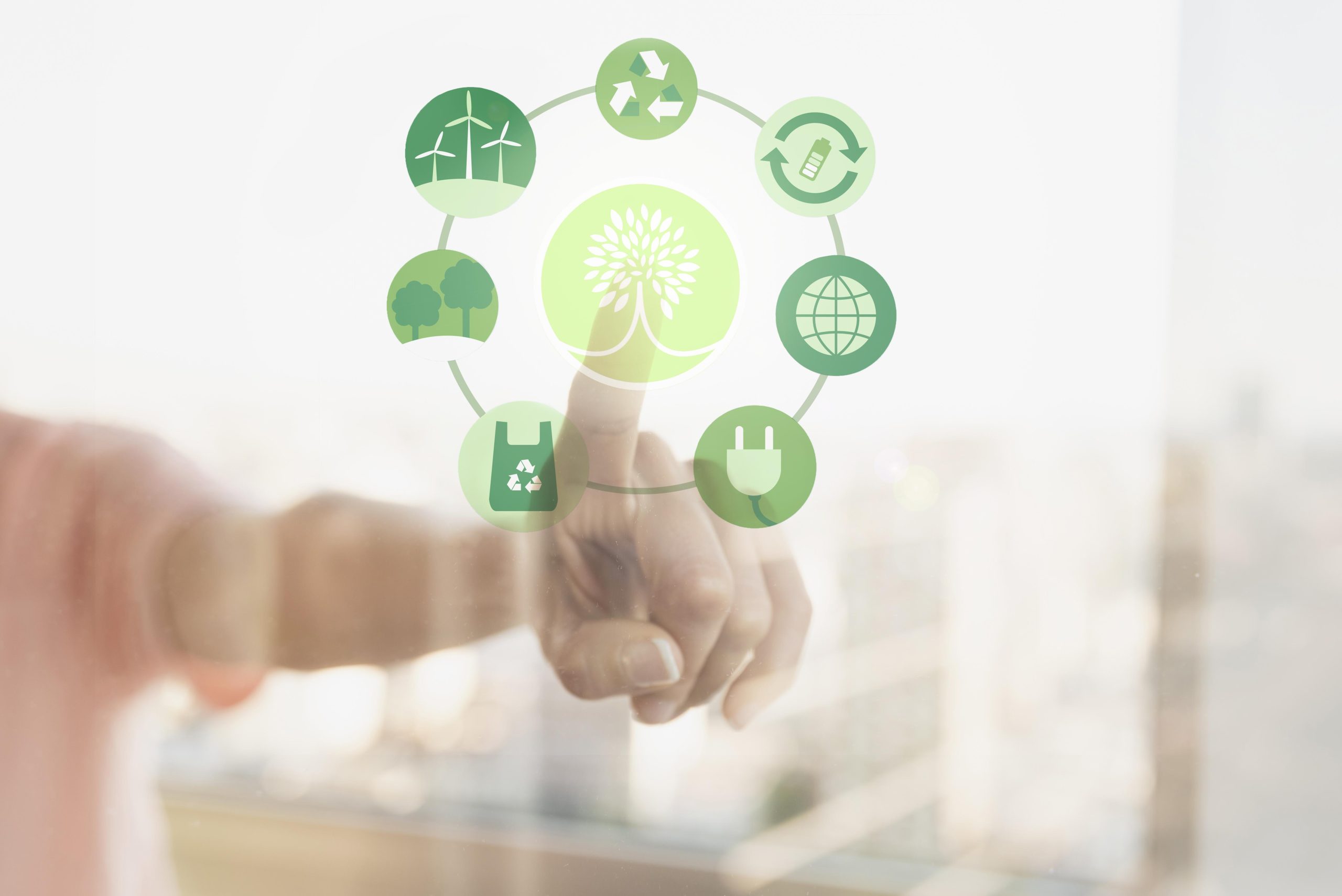
a. Reducing energy consumption and carbon footprints
IoT-equipped offices can significantly reduce energy consumption by adopting intelligent lighting and smart temperature management devices. These devices work on motion sensors and adjust lighting and cooling based on occupancy, thus reducing unnecessary energy usage.
b. IoT for waste management and e-waste reduction
IoT helps track the lifespan of devices and alerts office managers when replacements or repairs are needed. This proactive approach ensures that devices are recycled or disposed of responsibly, reducing e-waste and minimizing environmental impact.
c. Promoting green buildings through automation
IoT-enabled workspaces can predict and prevent technical faults by continuously monitoring connected devices. This predictive maintenance approach ensures minimal downtime and prevents unexpected outages.
4. Enhancing Workplace Productivity with IoT
a. Data-driven decision-making for workspace optimization
IoT provides access to real-time data that can inform decision-making and improve performance. Sensors in the office monitor everything from workspace usage to energy consumption. This data, when analyzed, gives businesses valuable insights—like when certain areas of the office are underutilized or when equipment is being overused. Office managers can make adjustments, accordingly, optimizing both space and resources.
For example, IoT tools can identify patterns in meeting room bookings, revealing when peak usage times are or if certain rooms are consistently empty. These insights can help organizations make smarter decisions about office layouts, reduce unnecessary overhead, and ensure that space is being used to its full potential. The more efficiently an office operates, the more productive the employees are.
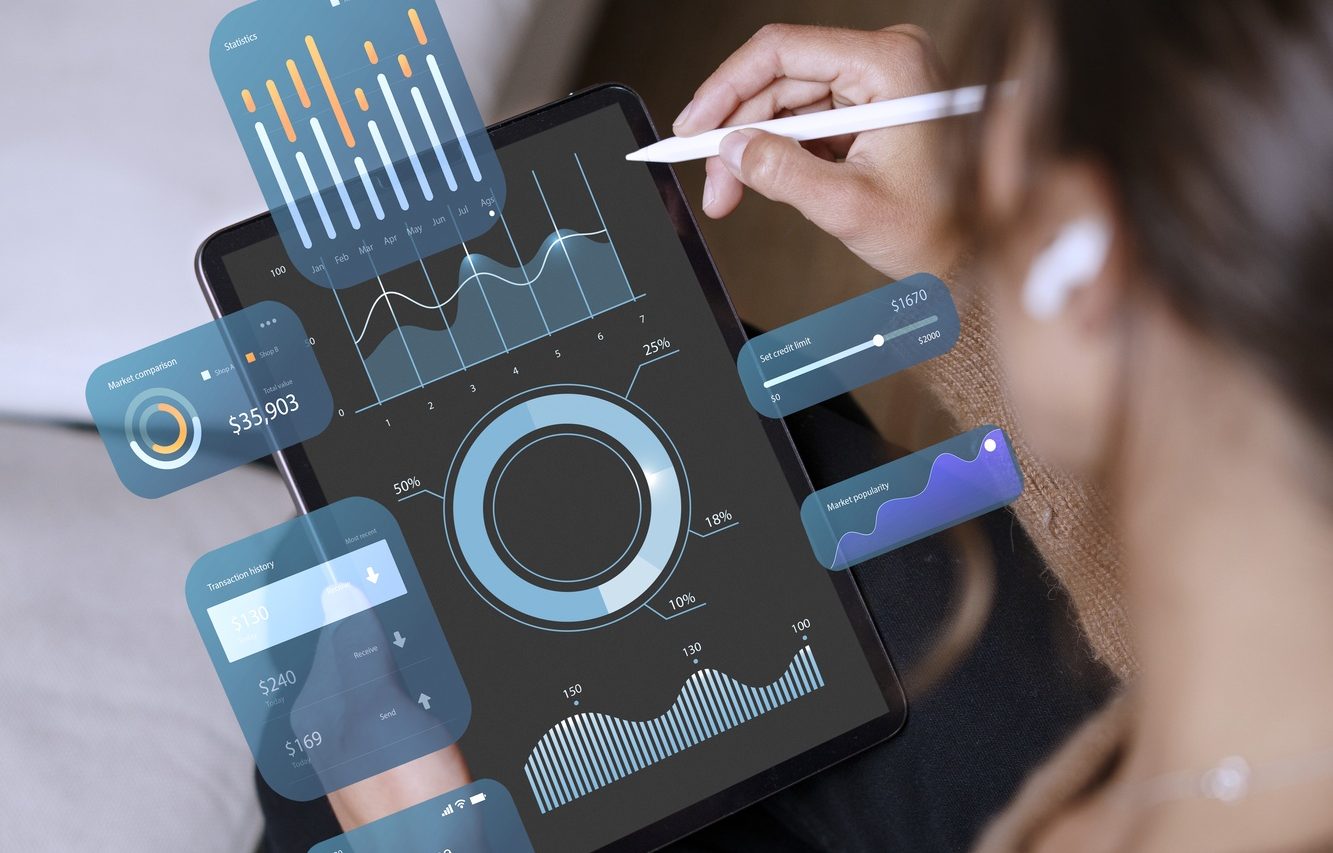
b. Predictive maintenance to reduce downtime
Having IoT-enabled equipment that self-monitors for faults or wear is a real productivity booster. I’ve seen how predictive maintenance can prevent major disruptions. IoT sensors in office machines—like printers, HVAC systems, and even elevators—can detect early signs of failure and alert facilities management before a breakdown happens. This reduces unexpected downtime and the need for reactive repairs, ensuring that employees can focus on their tasks without disruptions.
Instead of waiting for equipment to fail and cause a work stoppage, predictive maintenance helps fix issues before they become significant, which ultimately keeps operations running smoothly and minimizes downtime.
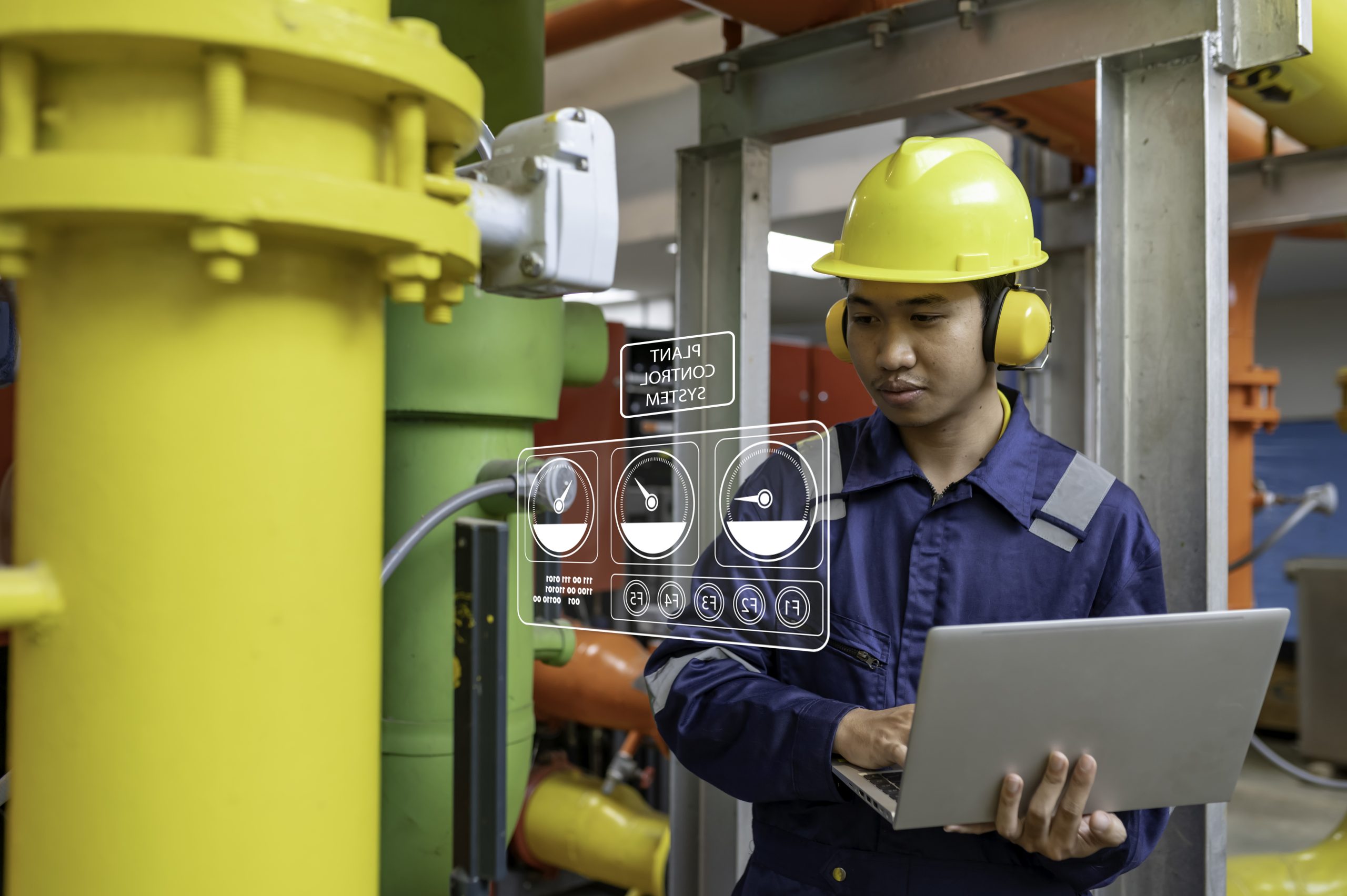
c. Streamlined workflows with connected systems
Streamlined workflows are another significant benefit of IoT in enhancing workplace productivity. By connecting various systems and devices, IoT ensures that data flows seamlessly across platforms, reducing the need for manual input or cross-platform switching. For example, when IoT-enabled sensors monitor office equipment, they can automatically update inventory systems, trigger maintenance requests, or even notify managers when supplies are running low—creating an efficient, hands-off process.
Additionally, IoT-integrated project management tools can update tasks in real-time as team members complete work, allowing for instant collaboration and keeping everyone on the same page. This interconnectedness eliminates bottlenecks, reduces delays, and helps employees stay focused on higher-priority tasks, ultimately optimizing overall workflow efficiency.
5. Workplace Safety and IoT
IoT technologies are revolutionizing workplace safety by providing advanced tools for real-time monitoring, early warning systems, and efficient emergency responses. IoT not only ensures compliance with safety standards but also creates a safer, healthier, and more responsive work environment. Here’s how:
a. Real-time hazard detection and alerts
One of the most significant ways IoT improves workplace safety is through the real-time detection of hazards. IoT sensors can be strategically deployed to monitor potential risks such as equipment malfunctions, fire hazards, or gas leaks. For instance, in manufacturing plants, sensors attached to machinery can detect unusual vibrations, overheating, or component wear, and immediately send alerts to maintenance teams. Similarly, smart fire detectors equipped with IoT capabilities can identify smoke or high temperatures and trigger alarms, notifying safety personnel in real time.
These alerts can be sent to multiple channels, such as smartphones, wearables, or centralized monitoring systems, ensuring that the right individuals are informed instantly. By detecting hazards as they occur and alerting employees and management promptly, IoT minimizes response times and reduces the likelihood of accidents, protecting both personnel and equipment.
Example: Siemens Smart Factory in Amberg, Germany
Siemens’ smart factory uses IoT sensors to monitor equipment for irregularities such as overheating or mechanical failures. If a potential hazard is detected, the system sends alerts to the maintenance team and shuts down the machine, preventing accidents. This proactive monitoring helps ensure worker safety by addressing risks before they escalate.
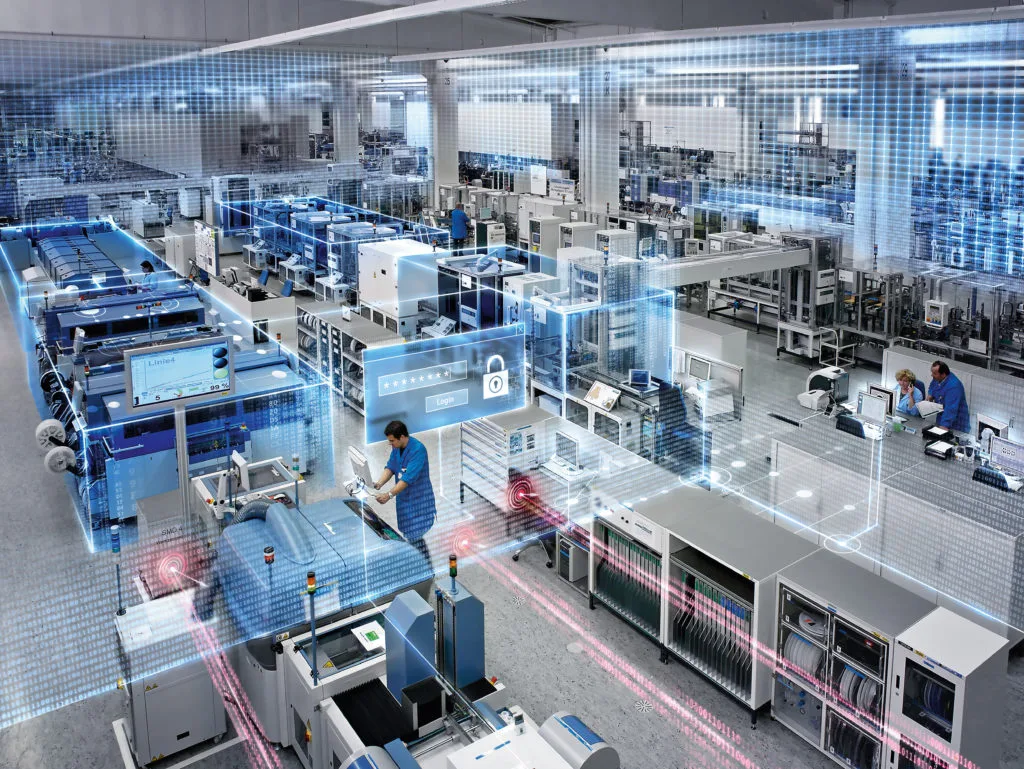
Source: SIEMENS
b. Environmental monitoring for air quality and temperature
IoT devices play a crucial role in monitoring environmental conditions that directly impact employee health and safety. Air quality sensors, for example, can measure levels of pollutants, carbon dioxide, or particulate matter in the workplace. When air quality drops below safe thresholds, the system can trigger ventilation adjustments or notify facilities managers to take corrective action. This is particularly valuable in industries where air quality is a significant concern, such as construction, manufacturing, or laboratories.
Similarly, IoT-enabled temperature monitoring systems ensure that employees are working in safe and comfortable conditions. In environments where temperature control is critical – such as cold storage facilities, data centers, or industrial plants, IoT sensors provide continuous monitoring, ensuring compliance with safety standards and preventing exposure to extreme conditions.
Example: Googleplex, Mountain View, CA
At Google’s headquarters, IoT sensors track air quality, temperature, and humidity in office spaces. If CO2 levels rise, the system adjusts HVAC settings to maintain a healthy environment. This ensures optimal air quality, preventing health issues like fatigue or decreased productivity and fostering a safer, more comfortable workspace.

Source: CETEC
c. Emergency response systems using IoT networks
IoT enhances emergency preparedness and response by enabling interconnected systems that act quickly and effectively during crises. IoT networks can link fire alarms, evacuation systems, surveillance cameras, and communication tools to provide a coordinated response during emergencies. For example, in the event of a fire, IoT-connected alarms can automatically notify emergency services, unlock evacuation routes, and guide employees to the nearest exits using smart lighting or wayfinding devices.
In addition, wearable IoT devices can track employee locations in real-time, ensuring that everyone is accounted for during an evacuation or emergency drill. Some systems can even use geofencing to isolate affected areas and prevent employees from entering dangerous zones.
Example: Honeywell Connected Safety
Honeywell’s IoT system integrates fire alarms, surveillance cameras, and wearable devices to improve emergency responses. In case of a fire or gas leak, it automatically triggers alarms, unlocks doors for faster evacuation, and alerts emergency services. Wearables also detect falls or distress, ensuring quick intervention and a more efficient emergency response.
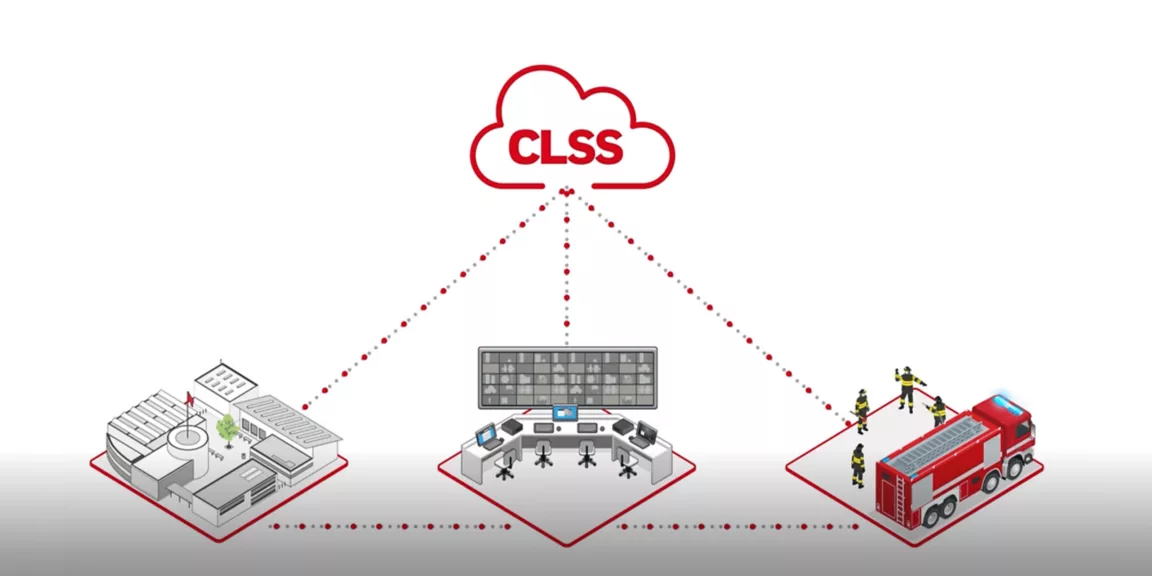
Source: Honeywell Connected Life Safety Services
6. IoT and Employee Well-Being
While IoT can improve workplace efficiency, it is crucial to consider its impact on employee well-being. The digitization of the workplace should aim to minimize stress and anxiety, rather than exacerbate it. So, companies can ensure that IoT solutions bring tangible benefits to employees.
a. Personalized work environments
Firstly, optimizing the work environment goes beyond technology and devices. Creating office space that adapts to employee needs, natural rhythms, and external factors like weather is crucial for employee well-being and productivity. Specifically, IoT allows employees to create workspaces tailored to their preferences. Smart systems let individuals control lighting, temperature, and even noise-canceling features via mobile apps or voice commands.
For instance, an employee might adjust their desk lighting to mimic natural daylight or set the room temperature to their comfort level. Additionally, IoT systems can remember individual preferences, ensuring the workspace is instantly optimized when an employee checks into their desk or office.
Philips Lighting’s Hue System at WeWork
At WeWork locations, Philips Hue smart lighting systems allow employees to personalize their workspace lighting. Through IoT-enabled apps, users can adjust the color temperature and brightness to suit their needs, whether they prefer bright lighting to boost alertness or softer lighting for a more relaxed atmosphere. This level of personalization contributes to employee comfort, focus, and well-being by aligning the workspace environment with individual preferences.
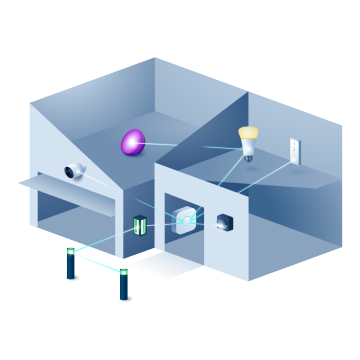
Source: Philips Hue
b. Monitoring and enhancing indoor air quality
Air quality plays a critical role in employee health and productivity. IoT-enabled air quality sensors monitor pollutants, carbon dioxide levels, humidity, and particulate matter in real-time.
For example, if CO2 levels rise in a meeting room, the system can trigger ventilation adjustments to ensure a steady supply of fresh air. This prevents issues like fatigue, headaches, or reduced cognitive function, which are often linked to poor air quality. Some systems even send alerts to facilities teams when pollutant thresholds are exceeded, enabling swift corrective actions and maintaining a healthier indoor environment.
Johnson & Johnson
At their global headquarters, Johnson & Johnson uses IoT-based air quality monitoring systems to track CO2 levels, humidity, and pollutants in office spaces. The system adjusts HVAC settings automatically to maintain optimal air quality, reducing discomfort and ensuring a healthier environment. This proactive approach helps prevent health issues like fatigue or reduced concentration due to poor indoor air quality, fostering better employee well-being.
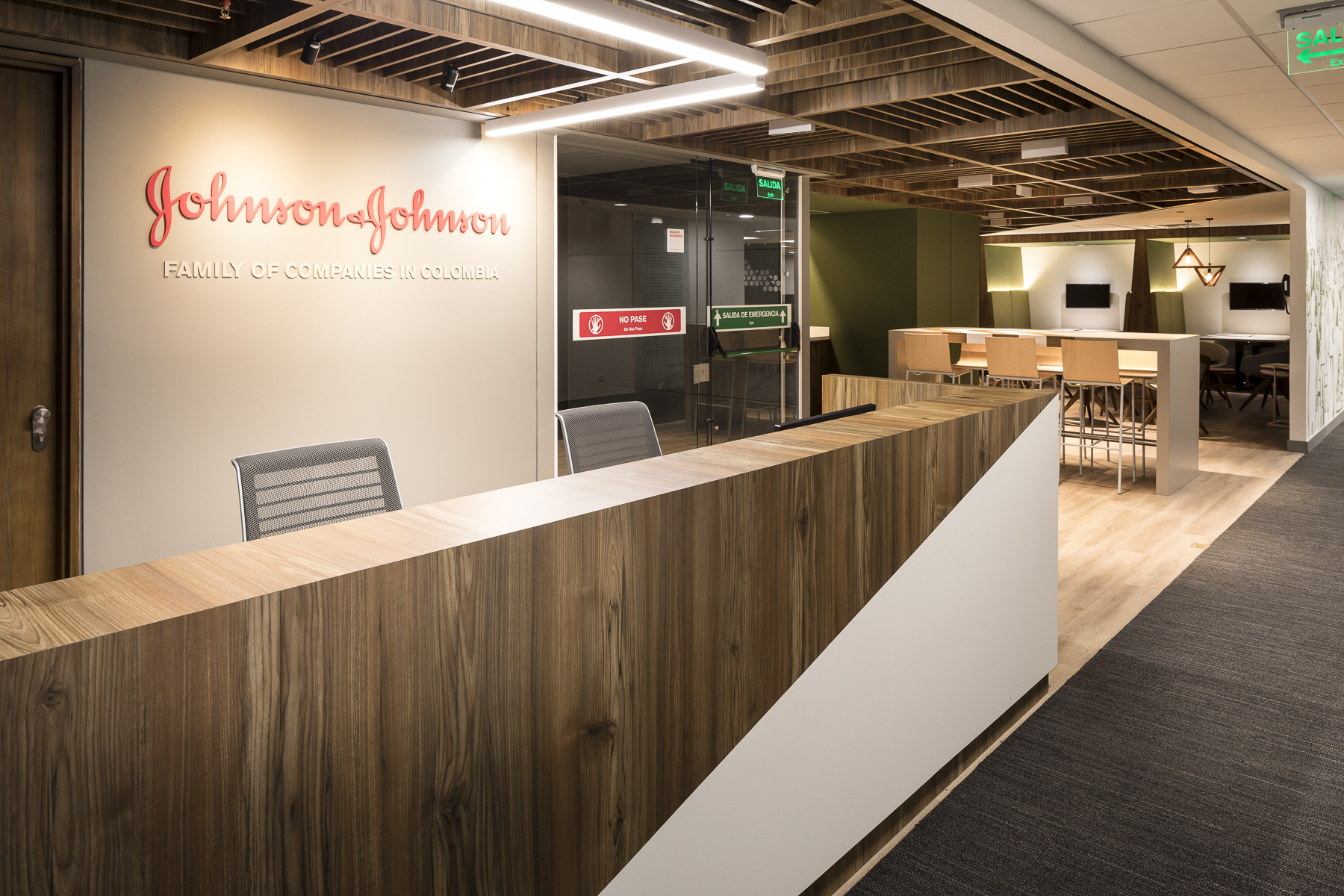
Source: Office Snapshots
c. Ergonomic enhancements with IoT-connected desks and chairs
IoT-connected furniture is transforming workplace ergonomics. Smart desks can adjust height automatically based on user preferences, encouraging employees to alternate between sitting and standing, which improves posture and reduces the risks associated with prolonged sitting.
Similarly, IoT-enabled chairs equipped with posture sensors can provide real-time feedback, reminding users to adjust their seating position for optimal spinal alignment. Over time, these features reduce discomfort, prevent musculoskeletal issues, and enhance overall physical well-being, promoting a healthier and more productive workforce.
Steelcase Flex Collection
Steelcase, a leader in office furniture, offers the Flex Collection, which includes IoT-enabled desks and chairs that automatically adjust to an employee’s preferences. The desks can be set to alternate between sitting and standing positions throughout the day, while ergonomic chairs provide feedback on posture. Steelcase helps reduce the risk of musculoskeletal issues and improve overall comfort, promoting employee health and productivity.
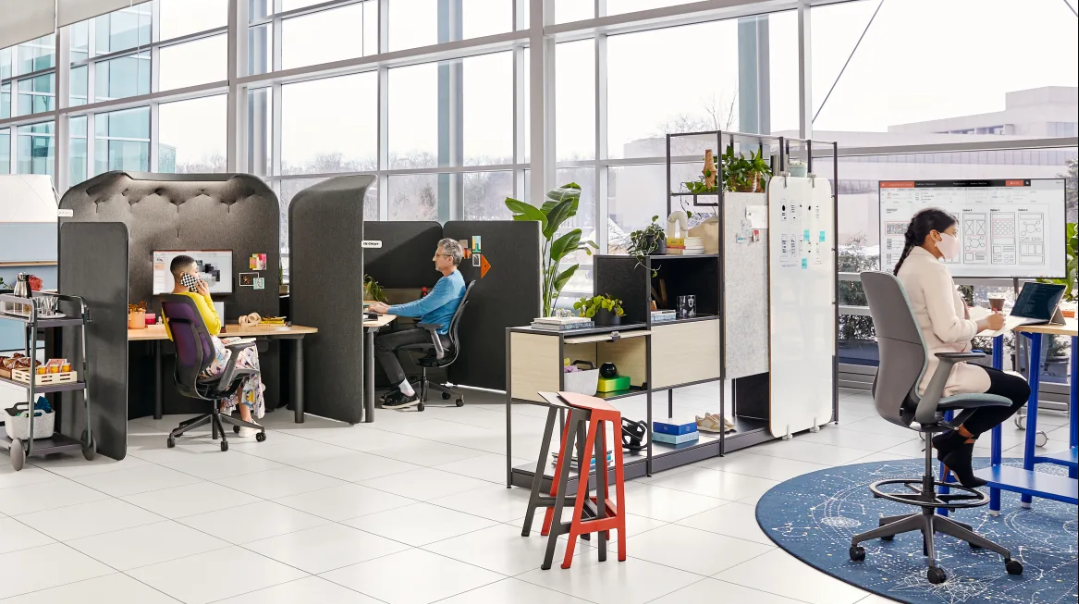
Source: Steelcase
7. IoT Security Challenges in Office Workspaces
While IoT technologies bring significant benefits to the workplace, they also introduce security challenges that organizations must address to ensure the integrity and confidentiality of sensitive data. As IoT devices proliferate, so do the risks.
Learn more: Overcoming the Challenges of IoT Development: A Comprehensive Guide
a. Cybersecurity risks associated with IoT devices
-
Vulnerabilities in IoT Devices
Many IoT devices, especially those from smaller vendors or those that haven’t been properly updated, are prone to security vulnerabilities. These devices often lack built-in security features such as strong encryption or secure firmware, making them easy targets for cyberattacks.
For instance, if an IoT-enabled smart camera or access control system is compromised, attackers could gain physical access to office spaces or surveillance footage, creating significant risks to both personnel and property.
-
Weak Network Security and Device Integration
IoT devices are often connected to corporate networks, which can increase the risk of a security breach. If one device is compromised, it may serve as a gateway to the entire network. Many IoT devices lack adequate network security protocols, and when connected to existing workplace infrastructure, they can introduce new vulnerabilities. If not properly segmented or secured, the devices may provide unauthorized access to critical systems, such as payroll, HR, or confidential business databases.
A recent vulnerability discovered in an IoT-connected thermostat at a large enterprise was exploited by attackers to access the company’s internal network. Once inside, the attackers could move laterally to steal sensitive data.
b. Data privacy concerns and solutions
IoT devices collect vast amounts of data, often containing sensitive information about employees, business operations, and physical premises. For example, wearable IoT devices might track employee movements, biometric data, or health metrics, while smart office devices might monitor meeting schedules and workspace occupancy.
If these devices are not properly secured, they can become a target for data breaches, leading to the exposure of sensitive personal and corporate information. Hackers could exploit vulnerabilities to gain unauthorized access to this data, compromising both employee privacy and the organization’s intellectual property.
c. Best practices for securing IoT networks
Not every challenge is impossible to overcome. Like people always say: where there is a will, there is a way. With the right measures and plans, risks can be eliminated and mitigated in various ways. SmartDev want to share the below suggestions that will surely address these challenges:
- End-to-End Encryption: Ensure all data transmitted by IoT devices is encrypted both in transit and at rest. This protects sensitive information from being intercepted or exposed.
- Data Anonymization: Use anonymization or pseudonymization techniques to minimize the amount of personally identifiable information stored or shared by IoT systems.
- Access Control: Implement strict access control policies, ensuring only authorized personnel can access sensitive data. Multi-factor authentication (MFA) should be used wherever possible.
- Regular Firmware Updates: Ensure all IoT devices receive regular firmware updates from manufacturers to patch known vulnerabilities. An automated update process can help keep devices secure.
- IoT Device Hardening: Change default passwords and disable unnecessary features on devices to reduce their attack surface.
- Vendor Security Audits: Only procure IoT devices from vendors who provide clear security documentation, conduct regular security audits, and offer robust support for device updates and patches.
- Network Segmentation: Use network segmentation to isolate IoT devices from critical business systems. This reduces the risk of an attacker using one compromised IoT device to access sensitive data or systems.
- Virtual Private Networks (VPNs): IoT devices should be connected through secure VPNs, ensuring encrypted communication between devices and central management systems.
- Intrusion Detection Systems (IDS): Deploy IDS/IPS (Intrusion Detection/Prevention Systems) to monitor network traffic for unusual patterns that may indicate a potential attack or compromise.
8. Case Studies: IoT Transforming Modern Offices
Below, we explore examples of companies adopting IoT technologies, the success stories that highlight their impact, and a cost-benefit analysis to illustrate the tangible outcomes of such transformations.
a. How companies are implementing IoT solutions to workplaces
Known for its innovation, Google has integrated IoT across its office spaces, including its headquarters at the Googleplex. The company uses IoT-enabled smart lighting, temperature control, and air quality monitoring to create a comfortable, energy-efficient working environment. Employees can control lighting and temperature via mobile apps or voice commands, contributing to a personalized workspace that fosters productivity and well-being.
Cisco
Cisco’s global offices are equipped with IoT-driven collaboration tools. For instance, their “smart offices” feature IoT-enabled desks, meeting rooms, and temperature controls, allowing employees to adjust their environments and book meeting spaces based on real-time data. Cisco’s office in San Francisco uses IoT sensors to optimize space utilization and reduce energy consumption by adjusting lighting and HVAC systems based on occupancy.
Schneider Electric
Schneider Electric’s Paris office is equipped with IoT devices that track energy consumption, space utilization, and air quality. The company reported a significant reduction in energy use (by over 30%) and increased employee productivity due to the personalized workspace settings enabled by IoT. The key takeaway was the need for scalability—Schneider Electric emphasized the importance of choosing solutions that could scale across their global offices while maintaining consistency in service and performance.
b. Lessons learned
Key Takeaways
Increased Productivity: IoT technologies enable smarter, more comfortable workspaces that enhance employee well-being. Companies like Schneider Electric and Philips have seen improvements in employee productivity and satisfaction because of personalized and optimized environments.
Operational Efficiency: IoT allows businesses to automate systems such as lighting, HVAC, and space utilization, leading to reduced manual intervention and better resource management. Cisco and Siemens have effectively leveraged IoT to monitor and control office environments, reducing inefficiencies and downtime.
Energy Savings: Many companies have realized substantial energy savings by using IoT for real-time monitoring of office systems. For instance, Philips’ smart lighting system saved 80% in energy costs, while WeWork and Schneider Electric also reported significant reductions in energy consumption.
Cost-Benefit Analysis
Adopting IoT in the workplace involves an initial investment in hardware, software, and integration, as well as ongoing maintenance costs. However, the benefits often outweigh these expenses. The cost of implementing IoT solutions typically includes the price of devices, installation, and any necessary software platforms. While initial setup can be costly, the return on investment (ROI) is generally realized through:
Energy Savings: Automated systems that optimize energy consumption can result in significant savings over time, often covering the initial investment within a few years.
Increased Productivity: By improving the work environment, IoT contributes to better employee well-being, which in turn boosts productivity and reduces absenteeism.
Operational Efficiency: IoT systems reduce manual oversight and optimize space utilization, leading to lower operational costs and increased overall efficiency.
A notable example is “The Edge,” an office building in Amsterdam, where Philips implemented a connected lighting system. This installation features nearly 6,500 connected LED luminaires, with sensors integrated into 3,000 of them. These sensors monitor occupancy and adjust lighting accordingly, contributing to significant energy savings. The project is expected to save approximately €100,000 in energy costs and €1.5 million in space utilization costs.
9. Emerging Trends and Technologies in Workplace IoT
As IoT continues to evolve, its adoption in office workspaces is on the rise. Companies are recognizing the benefits of IoT-enabled devices in creating efficient, connected, and data-driven work environments. To stay competitive, organizations need to embrace IoT and leverage its potential to optimize office spaces, improve employee well-being, and drive productivity.
The future of IoT in office spaces is promising, with endless possibilities for innovation and growth. Below SmartDev wants to share with you the trends in IoT at workplaces recently.
Trend No.1: Digital twins for office simulations
Digital twins refer to virtual replicas of physical systems or environments that use real-time data to simulate the conditions and performance of their real-world counterparts. In the context of the workplace, digital twins are being used to model office buildings, equipment, and even employee interactions, providing valuable insights for optimizing operations and improving decision-making.
By creating a digital twin of an office space, companies can simulate different scenarios to understand how changes to the environment—such as altering lighting, adjusting HVAC systems, or redesigning layouts—will impact employee productivity, energy consumption, or operational efficiency. For example, a digital twin could simulate the impact of switching to a hybrid working model, helping companies optimize the use of office space and adjust resources accordingly.
Benefits
- Predictive Analytics: Anticipate issues before they arise, such as system failures or inefficiencies.
- Cost Savings: Optimize resource utilization and energy consumption by simulating different operational strategies.
- Employee Experience: Test office configurations and environmental conditions to enhance comfort and productivity.
Trend No.2: Integration with AI for intelligent decision-making
The integration of Artificial Intelligence (AI) with IoT systems is one of the most transformative trends in the workplace. AI-powered IoT devices can collect and analyze vast amounts of data in real time, providing actionable insights that enable smarter decision-making. This fusion of technologies allows for the automation of many processes, improving efficiency, and enabling organizations to make data-driven decisions faster.
For example, AI can be used to analyze data from smart sensors in an office to optimize environmental settings like lighting, temperature, and air quality in real time. AI can also detect patterns in employee behavior and office utilization, allowing organizations to adjust space allocation, improve collaboration, and predict when equipment needs maintenance.
Benefits:
- Automated Processes: AI-driven systems can automatically adjust office settings for optimal efficiency, reducing the need for manual interventions.
- Predictive Maintenance: AI helps predict equipment failures, preventing downtime and reducing repair costs.
- Enhanced Personalization: AI can learn from employee preferences, creating a personalized workspace that boosts comfort and productivity.
Trend No.3: The role of 5G in enhancing IoT connectivity
5G technology is set to revolutionize IoT by providing faster, more reliable, and low-latency connectivity, which is essential for the growing number of connected devices in the workplace. Unlike previous generations of wireless technology, 5G offers significantly higher speeds, greater bandwidth, and lower latency, allowing IoT devices to transmit vast amounts of data in real time.
In office environments, 5G will support a wide range of applications, from smart building systems to enhanced collaboration tools. For example, with 5G’s low latency and high bandwidth, employees can seamlessly use augmented reality (AR) or virtual reality (VR) tools in meetings, even when working remotely. Moreover, 5G enables more devices to be connected simultaneously, which will be crucial as workplaces continue to deploy more IoT sensors, smart devices, and wearables.
Benefits:
- Real-Time Data Transfer: 5G enables instant communication between IoT devices, facilitating better real-time decision-making.
- Improved Remote Work: With 5G, employees can work more efficiently with high-definition video calls, augmented reality, and virtual collaboration tools.
- Scalability: 5G’s ability to support a large number of connected devices ensures that as more IoT devices are deployed, the network can handle the increased load without performance degradation.
10. How to Implement IoT in Your Office
Implementing IoT in office environments can seem like a daunting task, but with the right approach, businesses can unlock significant improvements in efficiency, productivity, and employee satisfaction. Below is a step-by-step guide to help you integrate IoT in your office spaces.
a. Step-by-step guidance
The process of integrating IoT into the workplace involves careful planning, system design, and continuous monitoring. Here is a clear step-by-step guide for businesses to follow:

Step 1: Assess Current Needs and Define Objectives
Before implementing IoT, businesses must first identify the specific goals they wish to achieve. Do you want to reduce energy consumption? Improve space utilization? Enhance employee productivity? Begin by conducting an audit of the current office setup to determine areas where IoT could be most impactful. Speak with stakeholders to align IoT goals with organizational objectives.
Step 2: Choose the Right IoT Platform
Select an IoT platform that will serve as the central hub for managing your devices. This platform should be scalable, secure, and capable of integrating with your existing office infrastructure. Many businesses opt for cloud-based platforms that allow for remote management and real-time data analysis.
Step 3: Design the IoT Infrastructure
Plan the physical infrastructure required to deploy IoT devices. This includes ensuring the network infrastructure can handle the data traffic generated by IoT devices. You may need to upgrade Wi-Fi systems, install additional sensors, and ensure power sources are available for new devices. Depending on the scale of the implementation, consider whether a private or public network will be most appropriate for your needs.
Step 4: Select IoT Devices and Sensors
Choose IoT devices based on the specific needs identified in Step 1. Consider sensors for lighting, temperature control, occupancy, and environmental quality, as well as smart office equipment like desks and meeting rooms. Ensure that the devices are compatible with your IoT platform and can be integrated smoothly into your existing systems.
Step 5: Pilot Test the IoT System
Before rolling out the IoT system across the entire office, conduct a pilot test in one area or department. This allows you to assess the performance of the devices, ensure proper connectivity, and identify any issues that may arise. Collect feedback from employees and adjust as needed.
Step 6: Full Deployment and Staff Training
Once the pilot test is successful, proceed with full deployment. Ensure that all staff members are trained on how to interact with the IoT-enabled systems, whether it’s adjusting the office temperature, using smart desks, or accessing collaborative tools. Ongoing training and support should also be available to address any issues that may arise.
Step 7: Monitor, Maintain, and Optimize
The final step involves continuous monitoring of IoT devices to ensure they are functioning as expected. Use the data collected to identify patterns and areas for improvement. Regular maintenance and software updates will be required to keep the system running smoothly. Analyze performance metrics regularly to optimize the setup over time.
b. Choosing the right IoT devices and systems
When it comes to selecting IoT devices and services for the office, it’s essential to make informed choices based on specific needs, budget constraints, and long-term goals. Below are key criteria to consider when selecting IoT devices for your office setup:

Compatibility and Integration
The devices you choose must be compatible with your existing office infrastructure, including network systems, software platforms, and other devices. Opt for IoT products that can seamlessly integrate with your current office management systems, such as HVAC systems, lighting controls, and security protocols. Many IoT platforms and devices today offer open APIs, making integration easier.
Scalability
Ensure that the IoT solutions you choose are scalable to accommodate future growth. As your business expands, you may want to add more devices or upgrade existing systems. Choose devices that allow for easy expansion or modification without requiring a complete overhaul of your IoT infrastructure.
Security
Security is one of the most critical factors in any IoT implementation. Since IoT devices are connected to the internet and often carry sensitive data, it’s essential to choose devices that have robust security features such as end-to-end encryption, secure authentication, and regular software updates. Opt for vendors with a proven track record in cybersecurity to minimize vulnerabilities.
Data Analytics and Reporting
Choose IoT devices that come with advanced analytics capabilities. The real value of IoT lies in the data it generates. Ensure the devices you select provide actionable insights through dashboards, real-time monitoring, and data visualization tools. This will help you make informed decisions about office space utilization, energy consumption, and employee productivity.
Cost-Effectiveness
While it’s tempting to go for the latest and most sophisticated IoT solutions, it’s important to weigh cost against potential benefits. Choose devices that fit your budget but still meet your needs for functionality and scalability. Be sure to account for the total cost of ownership, which includes installation, maintenance, and future upgrades, not just the initial cost of the devices.
Vendor Reputation and Support
Research the reputation of IoT device vendors and ensure they offer strong customer support, especially post-purchase. Check customer reviews and testimonials to understand the reliability of the devices and services. Ensure the vendor provides comprehensive technical support, training resources, and timely software updates.
c. Measuring ROI and optimizing IoT setups
Once your IoT system is up and running, it’s critical to measure the return on investment (ROI) to determine whether the implementation is providing the expected benefits. The following steps can help you track and optimize your IoT setup:
Define Clear Metrics for Success
Before measuring ROI, define the key performance indicators (KPIs) that will reflect the success of the IoT implementation. These could include:
- Energy Savings: Track reductions in energy consumption from smart lighting, HVAC control, and other IoT-enabled systems.
- Employee Productivity: Measure improvements in productivity through time-saving devices, better collaboration tools, and optimized office environments.
- Cost Savings: Assess reductions in operational costs, such as maintenance, security, and facility management, thanks to IoT monitoring and automation.
Collect and Analyze Data
Monitor the performance of your IoT systems by continuously collecting and analyzing data from connected devices. Use the data to identify patterns, such as peak energy usage times or space occupancy trends, that can inform further optimizations. For instance, you might discover that certain spaces are underutilized and could be repurposed or that the HVAC system can be adjusted to save additional energy.
Measure the Payback Period
To calculate ROI, determine how long it will take for the savings generated by IoT devices (e.g., reduced energy costs, improved space utilization) to offset the initial investment. This is known as the payback period. A typical IoT deployment might show a payback period of 1–3 years, depending on the scale of the implementation and the types of devices used.
Optimize Over Time
IoT systems are not static; they should evolve as your business and its needs change. Based on the data and insights gathered, make adjustments to your setup. For example, if certain smart devices are underperforming, you can replace or upgrade them with more efficient models. Additionally, make continuous improvements in software settings or network management to improve connectivity and data flow.
Gather Employee Feedback
Employee satisfaction and engagement are essential metrics to track in any IoT implementation. Regularly survey employees about their experience with IoT systems, particularly regarding comfort (e.g., temperature, lighting), ease of use, and collaboration tools. Employee feedback can help identify areas that require adjustment or improvement.
11. The Future of IoT in Office Workspaces
The role of the Internet of Things (IoT) in office workspaces is rapidly evolving, with new technologies and trends continually reshaping how businesses operate, and employees experience their work environments. As technology advances, workplaces will become smarter, more connected, and more efficient
a. Predictions for workplace IoT in the next decade
In the next ten years, IoT will play a central role in making offices more automated and intelligent. Smart systems will automatically adjust lighting, temperature, and energy use based on real-time data, improving efficiency and comfort.
AI and IoT will work together to optimize office environments, making them more energy-efficient and cost-effective. 5G networks will also enhance IoT connectivity, allowing more devices to be connected and data to flow more seamlessly. This will create a more dynamic and flexible office environment where decisions are made based on real-time data and predictive insights.
b. Evolving employee expectations
As IoT technology improves, so will employee expectations. Workers will demand more personalized workspaces where they can adjust lighting, temperature, and even desk configurations to suit their preferences. In addition, employees will expect more control and transparency over the data being collected about their work habits and environment.
Well-being will also be a priority, with IoT used to monitor air quality, ergonomics, and lighting conditions to support a healthier work environment. The workplace will need to adapt to these needs to keep employees engaged and productive.
c. The role of IoT in hybrid and remote work models
IoT will be crucial in supporting the continued rise of hybrid and remote work models. For hybrid teams, IoT solutions will help employees book desks and meeting rooms, manage office resources, and ensure that space is used efficiently. Smart collaboration tools will keep remote and in-office workers connected, making communication and teamwork seamless.
For remote workers, IoT devices like smart desks and adjustable lighting will help create more productive home office setups. IoT platforms will also enable smooth integration between home and office environments, ensuring flexibility and consistency for employees wherever they work.
12. Conclusion
In conclusion, IoT is transforming office workspace into smart, connected environments. From responsive workspaces and sustainability initiatives to the integration of technology and personalized client experiences, IoT is revolutionizing how we work. By harnessing the power of IoT, companies can create efficient and productive workspaces that enhance employee well-being and drive business success. The future of IoT in office workspaces is bright, and organizations that embrace this technology will be at the forefront of workplace innovation.
If you’re looking for a company with a formidable background in IoT and machine learning, you’re in the right place. SmartDev has helped multiple companies and provides a variety of team structures as well as advanced tech solutions to support you as needed. If you’re interested in discussing a project, don’t mind sending us your message. Join us for future growth with IT solutions.
References
- The Internet of Things: Mapping the Value Beyond the Hype | McKinsey & Company
- 8 Workplace Technology Trends for 2024 | K2Space
- IoT in the workplace: A comprehensive guide to the future of work | IoT Now
- Technology trends for workplace wellness in 2024 | IoT Insider
- Illuminating Efficiency: How Philips Hue and IoT Transform Commercial Lighting | Matt Wilkie | LinkedIn
- Google Workspace announces innovations to bridge hybrid work gaps | IoT Global Network
- Making smart building real | SIEMENS
- Johnson & Johnson: An Edge Architecture Approach to Securing Industrial IoT Networks | Cisco
- Make Your Digital Workplace Employee-Friendly With These Six IoT Best Practices | Gartner
- IoT For Workplace Automation: How Internet Of Things Can Change Offices | Forbes
- IoT Lessons From Philips Hue Smart Lighting Security Flaws | CXO Today







